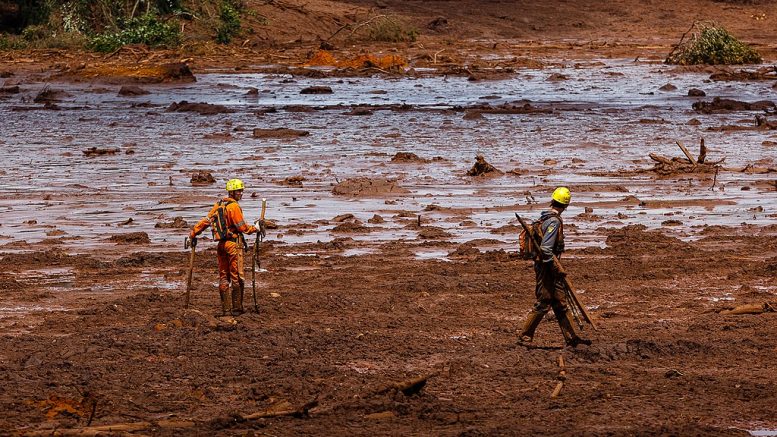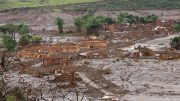A newly released assessment of global tailings management facilities (TMFs) data paints a jarring picture showing that relative to global mine production, there has been no improvement in the rate of significant failures, according to watchdog World Mine Tailings Failures (WMTF).
According to data released for the first time on Tuesday, the rate was constant at 0.09 failures per billion tonnes of production in both the decades of 2000-2009 and 2010-2019.
“Including the failures since 2019, the overall failure rate has increased to 0.1,” confirmed the organization’s executive director, Lindsay Newland Bowker, in a statement to The Northern Miner.
“We have lost ground; not made progress in preventing significant failures,” said the executive. “There have been 35 significant failures through Dec. 31, 2021, on an estimated 340 billion tonnes of world mineral production.”
The organization now says it forecasts the worst decade in history for TMF failures.
“Applying that failure rate of 0.1 to the expert-predicted 184.3 billion tonnes of production between 2015 and 2024, we predict the worst decade in recorded history at 18 ‘very serious’ failures. The decade 2010-2019 had only 15 ‘very serious’ failures,” said Newland Bowker.
“As all our published predictions since 2014 have proven accurate, we have confidence in our current prediction of 13 catastrophic failures between 2025 and 2029.”

Despite Vale’s Brumadinho disaster in Brazil capturing the media limelight, China is, in fact, host to 20% of global TMF failures over the past two decades. Credit: World Mine Tailings Failures.
Newland Bowker said it was the first time the supporting failures data has been presented to inform the industry and public about the critical global situation.
According to the data, among the 17 nations representing 67% of global mineral production which had one or more significant failures since 2000, those with better-informed mineral policy, notably the U.S., Canada and Australia, had markedly lower failure rates relative to their share of world mineral production than politically unstable nations such as the Philippines, Peru, Mexico, Brazil, Kazakhstan, Romania and Hungary.
Of the estimated 12,000 active TSFs in the global portfolio, 270 to 280, or 2%, are likely classifiable as “extreme potential risk” (index >60) or “very high” (index 20 to 59) on an actuarial basis, that is having a profile most associated with high-consequence failures.
“These represent an eventual estimated uninsurable, unfundable portfolio-wide ‘life-of-portfolio’ potential liability cost of US$688 billion if they were allowed to mature to failure.
“That’s a potential liability of US$21.5 million per facility life in the portfolio, and on a global portfolio basis, de-risking would cost an estimated $22 billion, or only US1¢ per tonne.
Newland Bowker said the absence of unified risk-centred or even basic descriptive national inventories of active, inactive and abandoned TSFs seriously hampered an accurate description of actual risk level in the current world inventory.
“We also have confidence, despite the fragmented authentication of the economic consequence of all post-2000 failures, that these 13 failures will have a cumulative cost of US$32.5 billion, or US$2.5 billion per catastrophe inclusive of public liabilities, stranded debt, lost stock value, court-ordered payments and other adjudicated third-party losses,” Newland Bowker said..
“This is without assigning any economic value to the loss of public water supply or impairments to subsistence or commercial crops and harvest or loss of essential natural habitat.”
According to Newland Bowker, Canada “certainly has its share of facilities with a likely undetected [or] unaddressed risk that could mature to failure.”
Canada at risk
In Canada, none of the provinces have a specific de-risking mandate. “If it existed, in the case of Mt. Polley, the regulator could have demanded a stability analysis and suspended all operations until that was done. With proper authority, it could then have demanded corrective measures before allowing Imperial Metals (TSX: III) to resume operations or any further TMF raises,” said the researcher.
Brazil now has such a system following Vale’s (NYSE: VALE) 2019 Brumadinho disaster. While there isn’t a framework anywhere in the world that gives a perfect working model, Newland Bowker said Canada had much more information at its disposal than most nations to take a more prominent leadership role.
However, despite the enduring lack of proper government oversight of TMFs, the country’s refined laws help mitigate disaster.
“The value and excellence of Canada’s mining law speak for itself in the stats. But Canada also has the least favourable ratio among the top three nations with the U.S. and Australia,” notes Newland Bowker.
“But still, if legitimate stability issues are flagged in a new design or an expansion, Canadian citizens, and especially Indigenous Peoples, have a higher likelihood that the vetting process will be far more effective [for them] in preventing loss and delivering protection than people in the Philippines, Peru, Sumatra, Mexico.”
The NGO plans to publish a case study later this week outlining how Chinese-owned zinc interests on Indonesia’s island of Sumatra pose a high risk to traditional communities.
“That paper concludes that the structure we have in place for world mineral supply will not be able to reach endangered host communities like [those in] Sumatra, who are insulated from the influence of the International Council on Mining and Metals’ environmental stewardship guidelines, major North American exchanges, and any reforms in North American and European legal frameworks specifically governing minerals,” said Newland Bowker.
“The public does not generally understand how much of what we all buy and use (67%) comes from economically unstable nations and at the expense of native peoples already facing food and water insecurity.”
“Without an external impetus to identify all high-hazard potential facilities and assure present stability, as the Global Tailings review could have done, it is obvious that the slow pace of even identifying actually at-risk facilities can only result in an escalated rate of catastrophic tailings failure. The absence of supporting government mandates for a regularly updated risk-centred inventory of all TSFs at all licensed mines further impedes risk assessment in the world inventory,” said Newland Bowker.



Be the first to comment on "Analysis: No reduction in tailings dam failures over the past two decades"